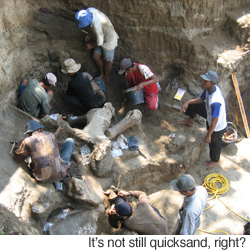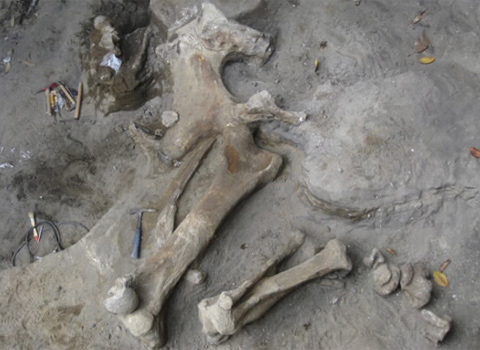 Researchers in Indonesia have unearthed a complete skeleton of an extinct elephant which died over 200,000 years ago.
Researchers in Indonesia have unearthed a complete skeleton of an extinct elephant which died over 200,000 years ago.The experts say it is almost unheard of to find remains in such good condition, and that it was only possible this time because of the odd way the elephant died.
While most dead elephants at the time would have been ripped apart and eaten by carnivores, boffins say this Dumbo got caught in quicksand, preserving it for generations to come.
They say the elephant was much bigger than modern-day Asian examples and would have stood at over four metres tall - the height of a double decker bus.
Sorry for using a double decker bus as our default unit of measurement for extinct but huge animals, but at least we are not the only ones. [Wiki Link]

The elephant became exposed in the walls of a sand quarry in East Java but took the researchers almost four weeks to remove the overlying sand, excavate the bones, and encase them in plaster for transport back to the Geology Museum in Bandung, West Java.
"This is a really significant find, it is one of the most complete elephant skeletons ever recovered," said Dr Gert van den Bergh.
"Normally, such dead animals would have been ripped apart and eaten by carnivores.
"But it appears that the elephant became bogged in the river shallows, perished and was quickly covered by sands – about 200,000 years ago. Parts of the skeleton were still articulated when found."
Link:
University of Wollongong


